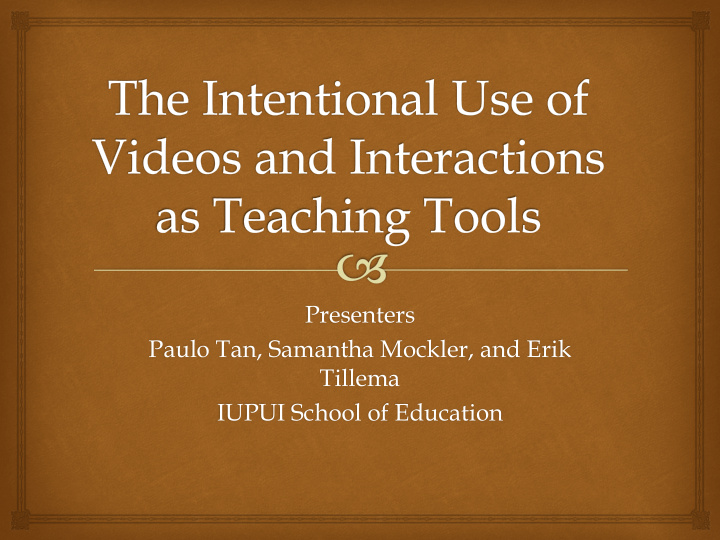



Presenters Paulo Tan, Samantha Mockler, and Erik Tillema IUPUI School of Education
Pre-service elementary school teacher course Components of the course Videos and interactions Two types of knowledge (Ball, 2000; Phillip et al., 2007) First-order Second-order
Objectives Experience Understand the difference between first and second- order knowledge Understand how formative and summative assessments are used in the course Engage in a discussion about the application of videos and interactions to other courses
Overview of the Presentation Individually work on a math problem View student video Discussion with a partner View a 2 nd student video (if time allows)
Overview of the Presentation (cont.) Large group discussion Sharing solutions to math problem Summary of the session Discussion on assessment procedures Implications for other disciplines
Think about… How the use of videos and interactions in developing first and second order knowledge could be applied to other disciplines?
Math Problem Sharing candy bars Work individually for 5 minutes
Math Problem Sharing candy bars Discuss with a partner
Summary Videos and interactions First and second order knowledge Assessments
Assessments Examples
Applications Social work Nursing Law
References Ball, D. L. (2000). Bridging practices: Intertwining content and pedagogy in teaching and learning to teach. Journal of Teacher Education, 51 , 241-247. Phillipp, R. A., Ambrose, R., Lamb, L. L. C., Sowder, J. T., Schapplelle, B. P., Sowder, L., et al. (2007). Effects of early field experiences on the mathematical content knowledge and beliefs of prospective elementary school teachers: An experimental study. Journal for Research in Mathematics Education, 38 (5), 438-476.
Recommend
More recommend